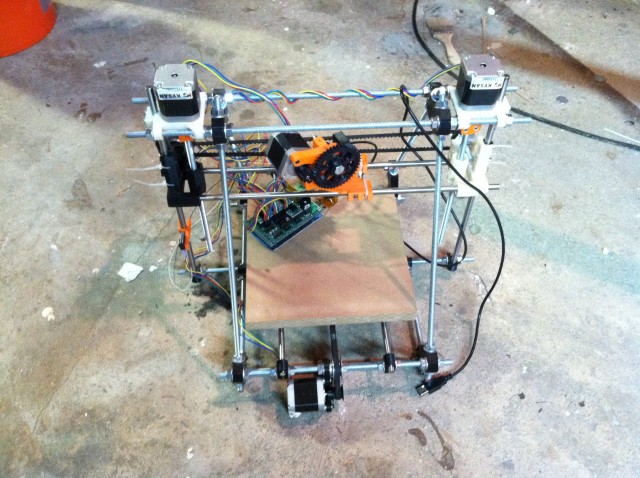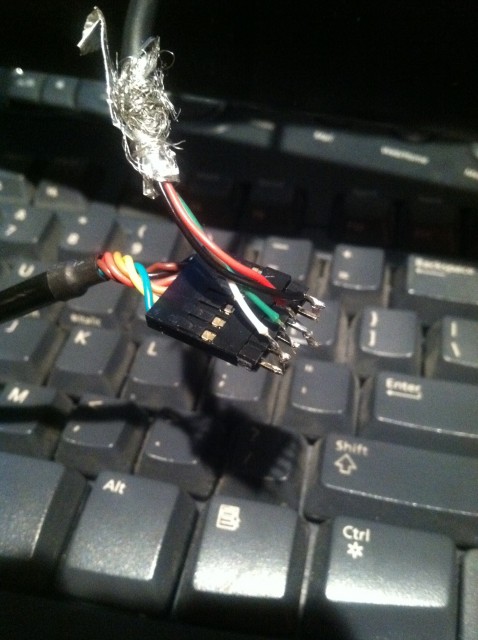Hardware upgrade: After wiring the 8-pin CPU power connector to go to the relay board and connecting my Cupcake's new PSU, the machine no longer skips steps in the Z-axis nor in the extruder and the heated build platform and extruder nozzle heat up in a more timely manner. My reasoning for wiring an 8-pin CPU power connector to the relay board was to ensure that the heater elements would have enough power and not take it from the steppers. I'm pretty sure this works because the CPU power is on a separate rail from the normal connectors, but it may also just be because everything isn't running off the same strand of connectors any more. It really is a nice power supply and I can really appreciate the engineering and industrial design work that went into it. Anyways, to finish up, I just need to cut a large hole or a series of holes in the bottom of the Cupcake's wooden "PSU shelf" so when I put it in, the power supply will have a way to draw in air for cooling. Then, I'll be able to close up my Cupcake for a while.
Software upgrade: I'm still on ReplicatorG 34 because it's what I'm familiar with and is the latest supported by my Gen3 electronics, but that doesn't mean I can't improve the slicing speed! Just today I managed to install PyPy, a really fast python interpreter that has been shown to make slicing go 4-5 times faster. For instance, Brainy Walt now slices in only 6 minutes on my Core i7 MacBook Pro where before it would take around 30-45 minutes. This is really great because now I can try out new settings without having to wait forever for Skeinforge to re-slice things.
Here's a tip for those of you trying to install PyPy and tkinter-pypy
on OS X Mountain Lion (and possibly Lion): If you get any ld errors
about missing tk8.4 or tcl8.4, just find the "setup.py" file in the
tkinter directory you're installing from and change the versions to 8.5
for both of them. Also, if you get any errors similar to that regarding
X11, first make sure you have XQuartz installed, then run
ln -s /opt/X11/include/X11 /usr/local/include/X11 in a terminal to
symlink the X11 includes so the setup.py script (or whatever else) can
find them.
RepRap status: Now that I've pretty much fully repaired my Cupcake, I can work on my Prusa Mendel without any guilt. All I need to do with it is figure out some temporary wiring scheme to test out the electronics and steppers, then I'll fit the heated build to the Y-axis plate and start trying out Slic3r.

